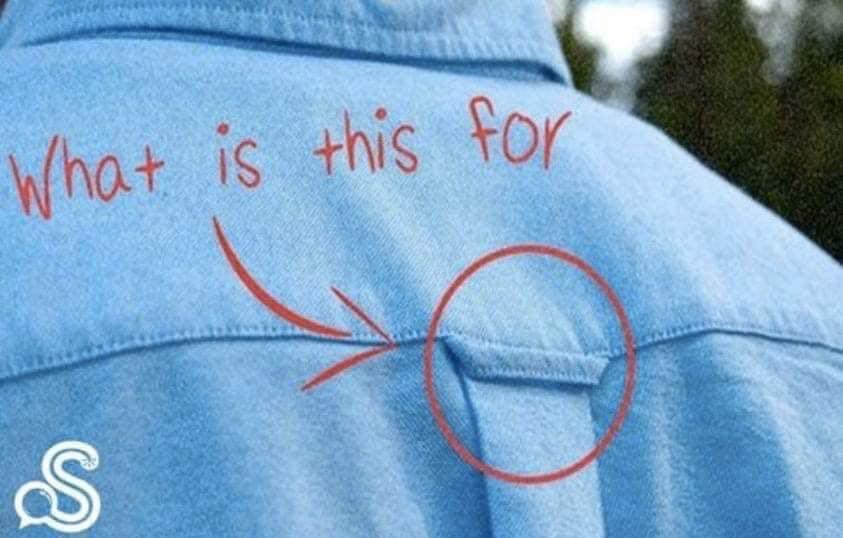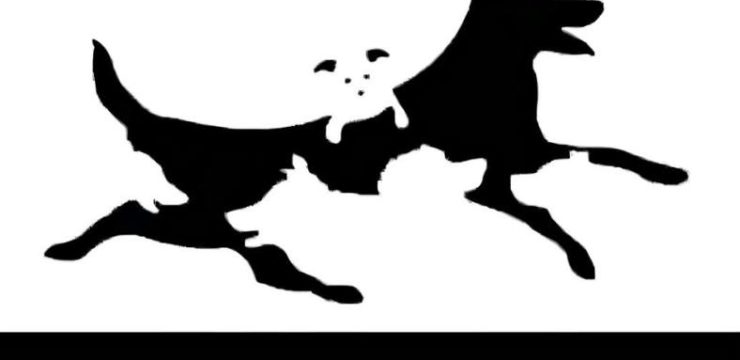Have you ever noticed that small loop on the back of men’s dress shirts? Often overlooked, this little detail has a surprising history and once served multiple unique purposes. Common on dress shirts and button-downs, this loop is more than a decorative feature—it actually played a functional role in clothing that dates back decades.

The Loop’s Origins: Convenience and Function
This loop, also known as a “locker loop” or “fairy loop,” is often positioned at the middle of the shirt’s back yoke. It was originally added to provide a practical solution to a common problem: where to hang a shirt when you’re on the go or don’t have access to a closet. Before the loop became a standard design feature, men often struggled to keep their shirts wrinkle-free while at the gym, in dorms, or on ships where storage space was limited.
Instead of having to fold or toss a shirt into a locker or over a chair, this simple loop allowed men to hang their shirts on hooks, minimizing wrinkles and preserving their shirts’ shape. It was particularly useful for men who led active lifestyles, like sailors or college students who shared tight living spaces or spent a lot of time in gym lockers. The loop made it easy to hang the shirt up quickly, without needing a hanger.
How the Loop Became a Sailor’s Tool
One of the most interesting aspects of the shirt loop’s history is its connection to American sailors. Sailors reportedly used these loops to hang their shirts on ship hooks, keeping them off damp floors and out of harm’s way. The functionality of the loop was essential on ships, where storage was limited and keeping clothes in good condition was a challenge. Over time, this simple loop became associated with durability and practicality, characteristics that suited the preppy style of American menswear perfectly.
The trend eventually spread from military and sailor gear to mainstream fashion, where it was embraced as part of the classic “preppy” look. In the 1960s, college students—especially those on Ivy League campuses—adopted the loop as part of their fashion culture. According to Gant, one of the popular clothing brands at the time, the loop was originally designed to appeal to students who valued practical yet stylish clothing. The look caught on, and the loop became a standard feature on many types of button-down shirts.
The Loop’s Secret Social Code: Are You Taken?
In addition to its practical use, the loop once held a social meaning. During the 1960s, the loop became a subtle signifier of a man’s relationship status among college students. If a man was dating someone seriously, he would remove the loop from the back of his shirt to signal that he was “taken.” Removing the loop was a quirky yet widely understood code that let others know he was off the market. This little social signal allowed students to communicate their relationship status discreetly and added a touch of intrigue to campus life.
As time passed, the loop’s social symbolism faded, and it eventually reverted back to being a simple design feature. Today, most people don’t associate the loop with relationship status, but it still adds a nostalgic element to men’s fashion.
The Evolution of Men’s Fashion and the Loop
American men’s fashion has undergone significant changes over the past century, evolving to fit new lifestyles and social norms. However, some elements have stood the test of time, and the shirt loop is one of them. Although its functional significance has largely faded, the loop remains a charming nod to traditional menswear and a bygone era of practicality.
Today, most people don’t use the loop to hang their shirts, as closets and hangers have become common. The loop now serves more as a design detail than a functional feature, but for those who appreciate the roots of fashion, it’s a reminder of how style and practicality were once closely intertwined. It’s a small piece of fabric that connects us to the past, when even minor details in clothing were designed with purpose and thought.
Why the Loop is Still Relevant Today
Even though the loop no longer serves the practical purposes it once did, it’s still a popular feature on many button-down shirts, especially those inspired by vintage or preppy styles. For some, it’s a nostalgic detail that hints at the shirt’s origins and history, while for others, it’s simply a stylish touch that adds character to an otherwise ordinary shirt. The loop is a subtle reminder of the timeless appeal of classic menswear and the influence of American fashion on global styles.
The shirt loop may be a tiny detail, but it’s also a reminder of the balance between form and function in fashion. It’s an example of how clothing manufacturers once went out of their way to create designs that addressed everyday challenges, from providing convenient hanging solutions to conveying social signals. It’s easy to forget that fashion isn’t just about looking good; it often reflects the needs and lifestyles of the time.
A Quick Look Back at the Loop’s Journey Through Time
To recap, the loop started as a practical tool, making it easy to hang shirts without wrinkling them—a feature especially useful for sailors and college students in the mid-20th century. It then became a symbol of relationship status on college campuses, serving as a discreet way to signal commitment. And while its purpose has evolved, the loop remains a standard part of shirt designs, connecting today’s styles with the fashions of the past.
So, the next time you spot a loop on the back of a shirt, remember that it’s more than just a piece of fabric. It’s a nod to history, a relic of classic American menswear, and a reminder of how even the smallest details in clothing can carry rich stories and meanings. Whether you use it, ignore it, or simply appreciate its history, that little loop represents a unique blend of practicality and style that continues to be part of modern fashion.
The story of the shirt loop is a perfect example of how fashion evolves while keeping traces of its origins alive. It may no longer serve its original purpose, but it remains a charming detail that links today’s shirts to their roots in American culture and menswear history.




